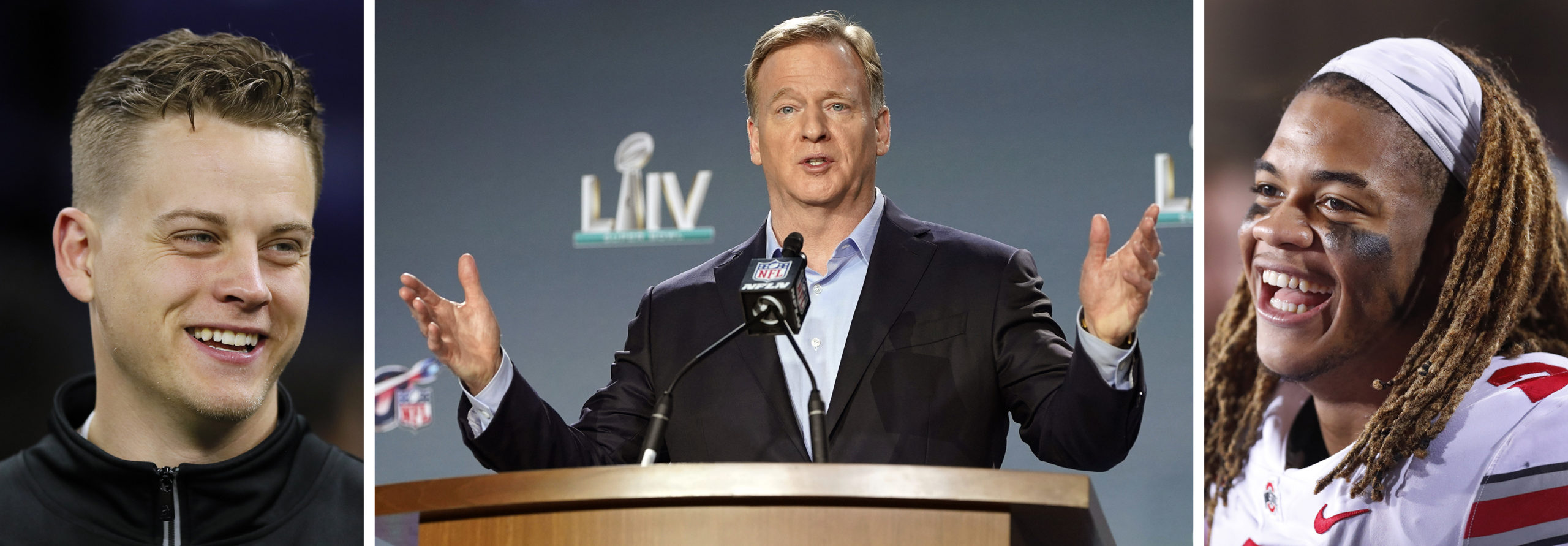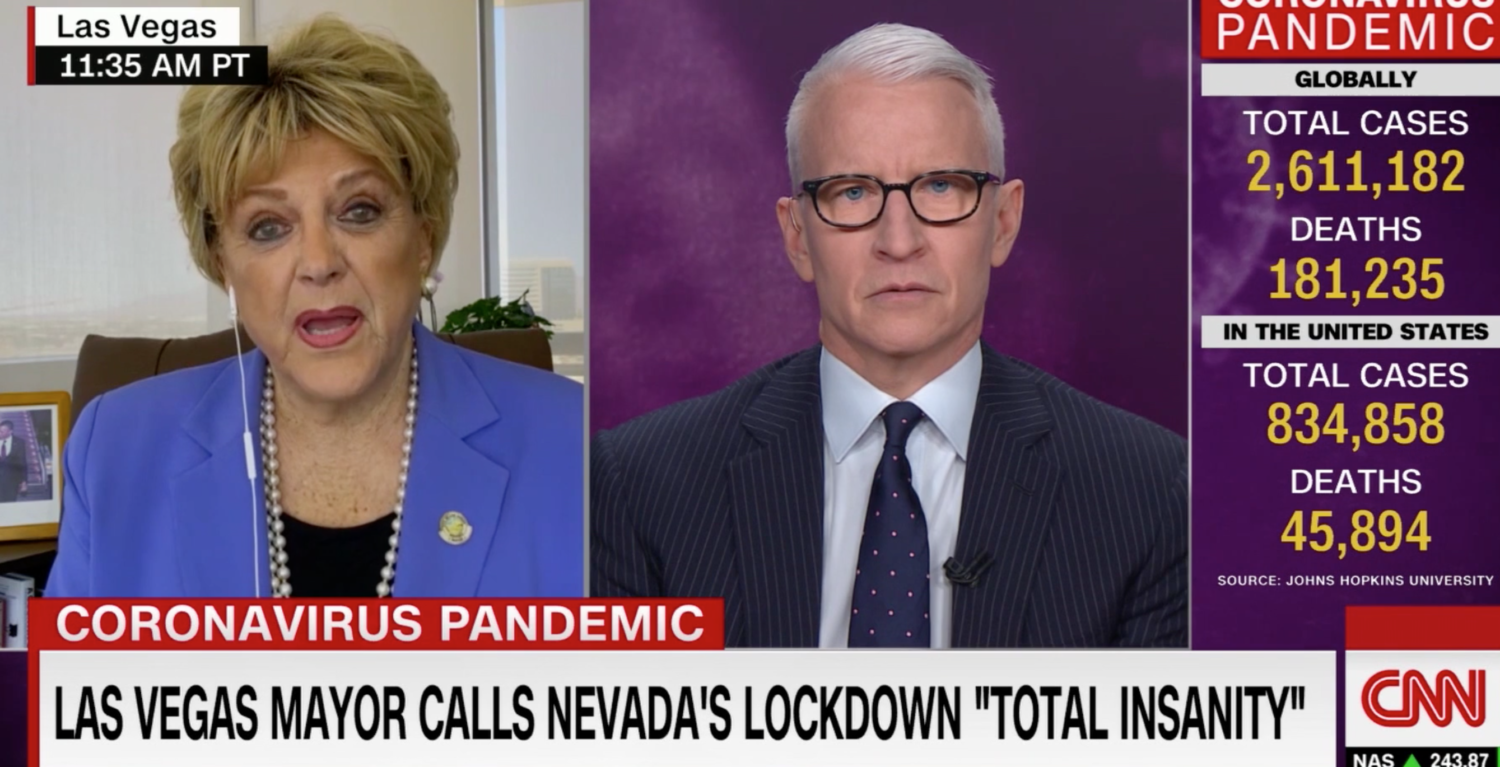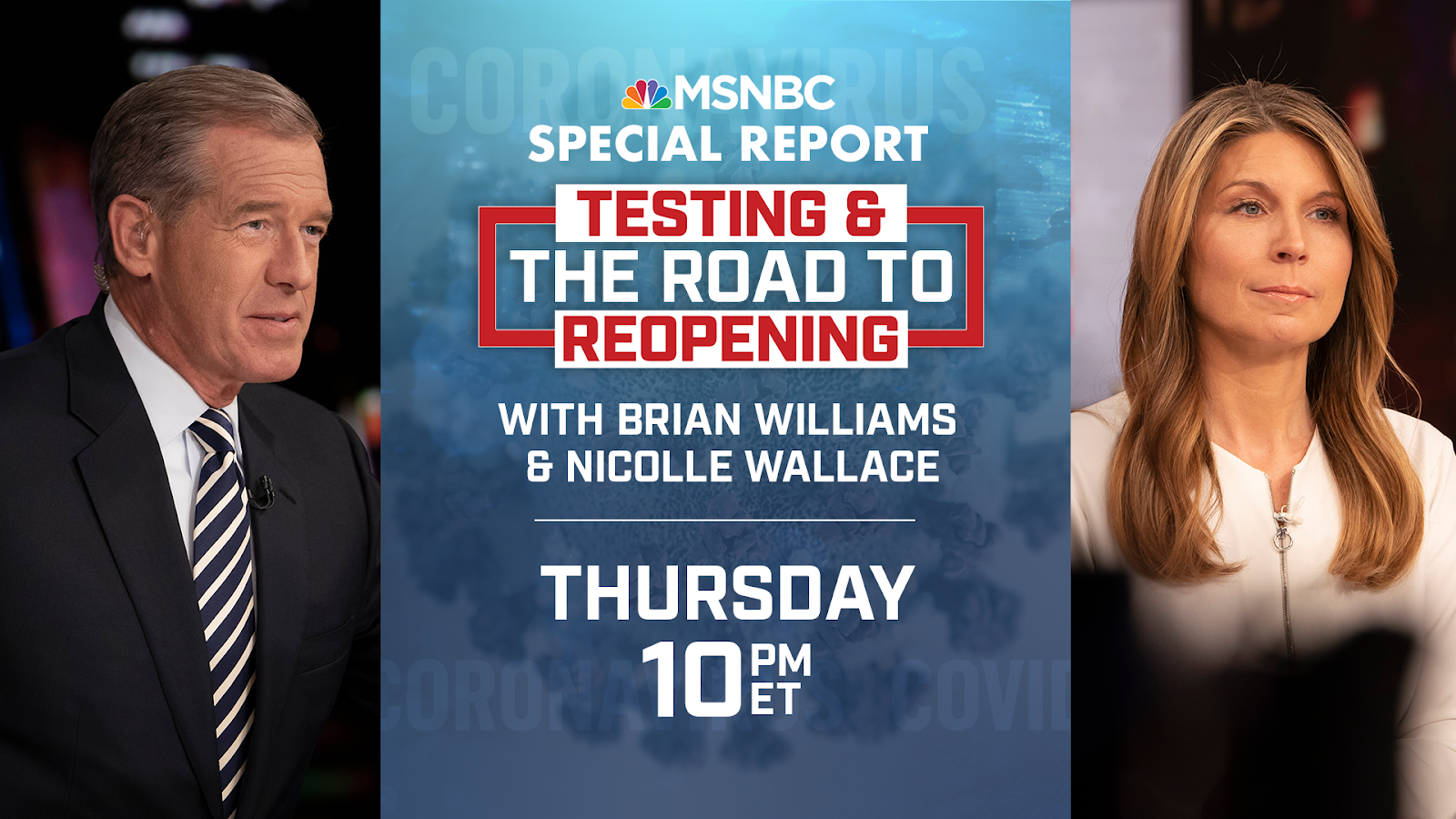The Poynter Report is our daily media newsletter. To have it delivered to your inbox Monday-Friday, click here.
We’ve seen a lot of weird stuff since the coronavirus, but Wednesday’s conversation between CNN’s Anderson Cooper and the mayor of Las Vegas is about as off-the-rails as it gets.
But there was way more to it than an interview gone viral for its train-wreck nature. It revealed why Cooper is so good at what he does.
If you missed it, here is my column recapping the astonishing Q&A that Cooper did with Vegas mayor Carolyn Goodman. Seemingly ignoring science and all the precautions needed to keep safe, an almost cavalier Goodman pushed for the casinos and other Las Vegas businesses to open.
With his masterful performance, Cooper showed again that he is one of the best interviewers in TV news.
So what makes him so good?
He asks fair, but tough questions. He listens to his subjects and proves it by asking pertinent follow-up questions. In fact, he’s one of the best in the business at follow-ups. Not only does that require listening, but also knowing the facts to push back against false claims. In short, he’s respectful but doesn’t put up with any baloney.
During Wednesday’s interview, Cooper had to adjust on the fly because Goodman’s answers often were so far out there. Yet, throughout, Cooper kept his focus, as well as his cool, and the result was an absolutely bonkers interview.
Cooper not only asked the right questions and follow-ups, but he called out the mayor when she said a few things she should have been called out on. For example, he called her comment “ignorant” when she dismissed research from Chinese experts and said, “This isn’t China. This is Las Vegas, Nevada.”
His timing was impeccable, alternating between letting the mayor talk and stepping in she said something that required an immediate response.
That’s why I called it a masterclass in interviewing.
Working from home
While on the topic of CNN, network president Jeff Zucker sent a memo to staff that said most of those who are working remotely will continue doing so until at least September. Right now, about 10% of CNN’s staff around the world is working in studios and offices. Another 5% could return early this summer.
In the memo, obtained by the Daily Beast’s Maxwell Tani, Zucker told employees, “Of course, none of these dates are set in stone, with many questions left to be answered before we can move forward. But, to be clear, production of our programs will continue from home, as it is now, until the end of summer. Same for digital.”
What’s stunning is just how good CNN’s coverage has been with guests and even some anchors working from home. And not just CNN. All networks have adjusted well to a new way of broadcasting. It just goes to show that when it comes to interviews and panels, it’s not how the guests look, but what they say. In the end, the info is still the thing.
Haunting scenes from the front lines
Powerful piece turned in Wednesday by Fox News foreign correspondent Trey Yingst, who reported from inside Israel’s second-largest COVID-19 intensive care unit. Yingst said doctors and nurses there told him they weren’t afraid because “they are too busy saving lives.”
One scene showed a nurse holding up a phone to a patient so he could FaceTime with his family. In another moment, Yingst reported on a 22-year-old patient whom doctors fear might not survive. That patient’s mother delivered cookies to the staff because she desperately wanted to do anything.
Yingst said it was “humanizing and haunting at the same time.”
NPR’s new public editor
My colleague Kelly McBride, Poynter’s senior vice president and chair of the Craig Newmark Center for Ethics and Leadership, published her first column Wednesday as NPR’s new public editor. Her plan is to write several columns a month.
In her introductory column, McBride wrote about her long-time experience listening to NPR and her initial thoughts on what NPR’s mission should be.
“For NPR to be consistently great, in my view it must do three things,” McBride wrote. “First, it must constantly deepen its connection to the audience, while building awareness of what that audience needs. Second, NPR journalists must embrace the highest standards of their craft. And finally, NPR must expand its audience and ensure that its journalism be more reflective of a diverse American public (a goal it has openly declared one of its highest priorities.)”
Taking a big hit
The 2008 recession was a gut-punch for newspapers. Could the coronavirus be a knockout blow?
Because of a dramatic loss in advertising revenue due to the effects of coronavirus, newspapers across the country have been slashing payroll through layoffs, pay cuts and furloughs. When you combine what’s happening now with what happened in 2008, it paints a gloomy picture.
The latest study by the Pew Research Center shows that U.S. newspapers have shed half their newsroom employees since 2008. According to Pew, the number of actual newsroom journalists at U.S. newspapers dropped 51% between 2008 and 2019 — from roughly 71,000 to about 35,000. And those numbers were BEFORE the pandemic.
The older you are, the more you know
A new poll from Pew Research Center shows that older Americans are following the coronavirus news closer than younger Americans. About 69% of Americans 65 and older said they were following the pandemic very closely. But only about 42% of Americans between the ages of 18 and 29 said the same. That trend can be seen in the middle, too. Of those between the ages of 50 and 64, about 63% were following the coronavirus closely. Of those between 30 and 49, the number was about 54%.
The finances of Fox Corp.
Fox News is dominating the cable TV ratings these days and its website is seeing record numbers. Yet, even Fox Corp. is feeling the impact of the coronavirus.
CEO Lachlan Murdoch announced Wednesday that he will forgo his salary for now, and that 700 employees at the company will have their pay reduced. Other top executives, including founder Rupert Murdoch, also won’t take a paycheck until at least Sept. 30. The New York Times’ Edmund Lee reported that Lachlan Murdoch makes $3 million in salary, with an additional $20 million coming from stocks and bonuses.
In a memo to the staff of more than 7,000 — obtained and published by Deadline — Lachlan Murdoch said the pay reductions were to “protect our full-time colleagues with salary and benefit continuation during the period we are most affected by the crisis.”
The cuts for other executives will be anywhere between 15% and 50%.
Fox Corp. has much more in its stable than Fox News and Fox Business Network. It also has Fox Sports, Fox Entertainment and local TV stations. The big hit, obviously, is in sports. Fox has national contracts with Major League Baseball and NASCAR — both postponed because of the coronavirus.
In his memo, Lachlan Murdoch wrote, “While we don’t know exactly when we will return to normal and full operations across the company, we have decided to take several new actions to ensure that we remain strong and are well-positioned when this crisis recedes.”
And another …
Add Univision to the list of media companies cutting costs. Forbes’ Veronica Villafane reports that there will be company-wide layoffs and furloughs from one to four weeks, and longer for those who work in sports. Univision will also cut executive pay and suspend matching 401K contributions.
Just the facts
The fact-checking team of The Washington Post has a new book coming out on June 2 called “Donald Trump and His Assault on Truth: The President’s Falsehoods, Misleading Claims and Flat-Out Lies.” Published by Scribner, it was compiled by Post fact-checkers Glenn Kessler, Salvador Rizzo and Meg Kelly.
According to the Post, Trump spoke or tweeted 16,241 false or misleading statements during his first three years as president. That’s an average of a remarkable 15 misleading claims per day.
Covering the draft

Tonight’s NFL Draft will feature, from left to right, LSU quarterback Joe Burrow, NFL commissioner Roger Goodell and Ohio State defensive end Chase Young. Burrow and Young are predicted by many experts to be the first two players selected. (AP Photo/File)
The first round of the NFL Draft is tonight and it will be unlike any other in recent memory. It will be done entirely by remote, because the coronavirus prevents any gatherings or normal TV coverage.
ESPN, which will carry the draft along with the NFL Network, has done well producing various debate shows and SportsCenter using remotes. But this will be something completely different, and the biggest test any network has undertaken since coronavirus. Not just sports networks, mind you. EVERY network.
This will require an extraordinary effort. We’re talking 32 NFL teams and dozens of reporters and analysts. Covering the draft under normal circumstances is full of hiccups. Covering like this and having it go smoothly might be next to impossible.
The road to reopening
MSNBC will air a 90-minute special tonight at 10 p.m. Eastern called “MSNBC Special Report: Testing & The Road to Reopening.” Hosted by Brian Williams and Nicolle Wallace, the special also will include Savannah Guthrie’s exclusive interview with Bill Gates. In addition, a panel of experts and NBC analysts will look at the challenges of broadening coronavirus testing and instituting more impactful contact tracing efforts.
Hot type
- Want to see some really cool sports photos? Check out this piece from Washington Post photographer John McDonnell, as he looks back at his five decades of shooting sports — including shots of Tonya Harding, Cal Ripken, Tiger Woods and a very young Michael Jordan.
- PBS’s latest “Frontline” episode asks “How did the U.S. become the country with the worst known coronavirus outbreak in the world?” The episode — “Coronavirus Pandemic” — can be streamed on the PBS website, the PBS app and YouTube.
- On Wednesday, I wrote about photojournalists and the risk of covering the coronavirus. Included in my item, I mentioned how the National Press Photographers Association shipped out 1,000 masks to visual journalists across the country. Independent visual journalist Melissa Lyttle, who was instrumental in the effort, wrote how it all came together in a piece for The Journalism Institute National Press Club.
Have feedback or a tip? Email Poynter senior media writer Tom Jones at tjones@poynter.org.
More resources for journalists
- Sign up to receive our new Coronavirus Facts newsletter — PolitiFact and MediaWise
- Bring Poynter to Your Newsroom, Classroom or Workplace
- Reporting on COVID-19: Ethical questions around covering COVID-19, April 23 at 11 a.m. Eastern — First Draft
- Covering Coronavirus: How to be an antiracist, May 4 at 11:30 a.m. Eastern — Journalism Institute, National Press Club
Want to get this briefing in your inbox? Sign up here.










